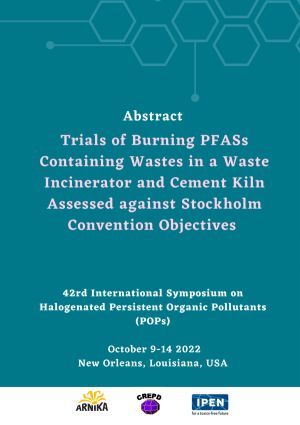Products or materials containing high levels of persistent organic pollutants (POPs) become POPs wastes when they become obsolete and/or cannot be used anymore due to their ban restrictions under the Stockholm Convention. POPs waste has to be “Disposed of in such a way that the persistent organic pollutant content is destroyed or irreversibly transformed so that they do not exhibit the characteristics of persistent organic pollutants”. They must be destroyed in environmentally sound manner by technologies listed in the General Technical Guidelines for POPs wastes which have been adopted by the Basel Convention Conference of Parties. This applies to all wastes containing POPs listed in Annexes A, B or C of the Stockholm Convention. However, some POPs can be harder to destroy or irreversibly transform, and for assessing the performance of the ESM operations, a minimum destruction efficiency (DE) of 99.999 percent, with a minimum destruction and removal efficiency (DRE) of 99.9999 percent as a supplementary requirement, provides practical benchmark parameters for assessing the effectiveness of POPs destruction technologies according to the above mentioned Basel Guidelines.
The group of per- and polyfluoroalkyl substances (PFASs) including PFOS, PFOA and PFHxS, which are already listed under the Stockholm Convention, are chemicals which are hard to destroy as they are designed to withstand high temperatures without degradation. It is also very difficult to evaluate their destruction because they may be transformed to other PFASs which are not listed under the Stockholm Convention but may represent a comparable threat to human health and environment.
This brief study is focused on evaluation of publicly available data about trials of burning wastes containing PFASs, in particular those listed under Stockholm Convention. These trials were undertaken in two high temperature operations based in Australia – a cement kiln and a high temperature hazardous waste incinerator







